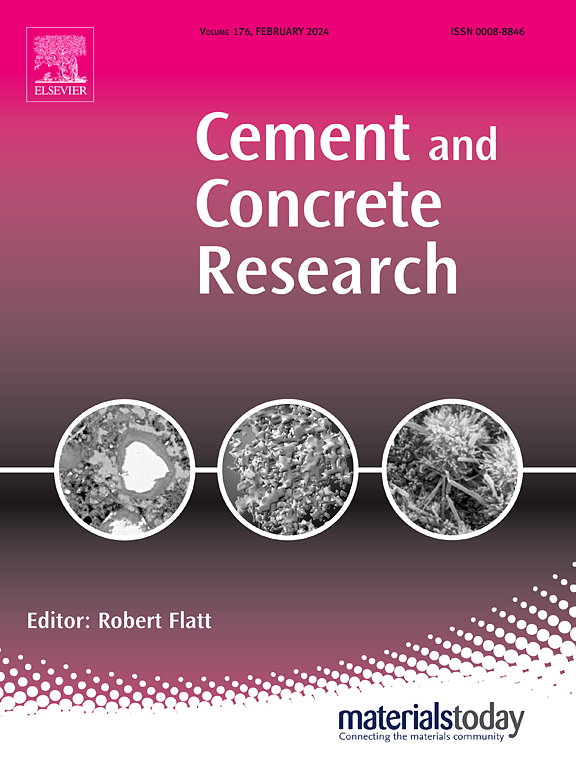碳化引发水化策略(CPHS)稳定高磷石膏OPC水泥
IF 13.1
1区 工程技术
Q1 CONSTRUCTION & BUILDING TECHNOLOGY
引用次数: 0
摘要
磷石膏(PG)在普通硅酸盐水泥体系中面临着巨大的挑战,因为它容易导致凝结延迟、强度降低和膨胀相关的不稳定性,因此将其用量限制在5%以下。为了解决这些限制,本研究提出了一种碳化水化策略(CPHS),其中磷石膏复合水泥进行加速CO2固化,然后进行水固化。这种两步法可以稳定地掺入高PG含量,同时保持机械和体积性能。在CPHS下,含20% PG的体系在24小时后达到35 MPa, 28天后超过60 MPa。即使在40% PG下,抗压强度也超过27mpa。所有组的勒夏特列膨胀都保持在1.5 mm以下,软化系数大于0.9证实了优异的耐水性。微观结构结果表明,碳化作用将C3S/C2S转化为CaCO3和硅胶,形成致密、稳定的基质,包裹PG,抑制硫酸盐浸出。随后的水化细化了孔隙结构,并通过C-S-H的增长恢复了反应性。该研究表明,在高PG含量的情况下,CPHS有效地缓解了钙矾石的延迟形成和性能下降,为PG在胶凝材料中的安全、耐用和低碳使用提供了一种实用的解决方案。本文章由计算机程序翻译,如有差异,请以英文原文为准。
Carbonation-Primed Hydration Strategy (CPHS) for stabilizing high-phosphogypsum OPC cement
Phosphogypsum (PG) presents significant challenges in ordinary Portland cement systems due to its tendency to cause delayed setting, strength reduction, and expansion-related instability, limiting its dosage to below 5 %. To address these limitations, this study proposes a Carbonation-Primed Hydration Strategy (CPHS), wherein phosphogypsum composite cement undergo accelerated CO2 curing followed by water curing. This two-step approach enables stable incorporation of high PG contents while maintaining mechanical and volumetric performance. Under CPHS, a system with 20 % PG achieved 35 MPa after 24 h and over 60 MPa at 28 days. Even at 40 % PG, compressive strength exceeded 27 MPa. The Le Chatelier expansion remained below 1.5 mm across all groups, and softening coefficients above 0.9 confirmed excellent water resistance. Microstructural results showed that carbonation transformed C3S/C2S into CaCO3 and silica gel, forming a dense, stable matrix that encapsulated PG and suppressed sulfate leaching. Subsequent hydration refined the pore structure and restored reactivity via C–S–H growth. This study demonstrates that CPHS effectively mitigates delayed ettringite formation and performance deterioration at high PG contents, offering a practical solution for the safe, durable, and carbon-efficient use of PG in cementitious materials.
求助全文
通过发布文献求助,成功后即可免费获取论文全文。
去求助
来源期刊

Cement and Concrete Research
工程技术-材料科学:综合
CiteScore
20.90
自引率
12.30%
发文量
318
审稿时长
53 days
期刊介绍:
Cement and Concrete Research is dedicated to publishing top-notch research on the materials science and engineering of cement, cement composites, mortars, concrete, and related materials incorporating cement or other mineral binders. The journal prioritizes reporting significant findings in research on the properties and performance of cementitious materials. It also covers novel experimental techniques, the latest analytical and modeling methods, examination and diagnosis of actual cement and concrete structures, and the exploration of potential improvements in materials.
 求助内容:
求助内容: 应助结果提醒方式:
应助结果提醒方式:


